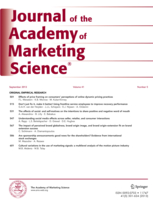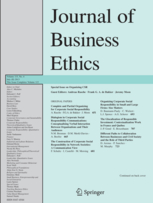Academic articles
Practitioner articles
Working papers
Books
Book chapters
Case studies
Other publications
Subject(s)
Entrepreneurship; Technology, R&D management
Keyword(s)
Search, innovation, individuals, attention, scientists, boundary-spanning
The “variance hypothesis” predicts that external search breadth leads to innovation outcomes, but people have limited attention for search and cultivating breadth consumes attention. How does individuals' search breadth affect innovation outcomes? How does individuals' allocation of attention affect the efficacy of search breadth? We matched survey data with complete patent records, to examine the search behaviors of elite boundary spanners at IBM. Surprisingly, individuals who allocated attention to people inside the firm were more innovative. Individuals with high external search breadth were more innovative only when they allocated more attention to those sources. Our research identifies limits to the “variance hypothesis” and reveals two successful approaches to innovation search: “cosmopolitans” who cultivate and attend to external people and “locals” who draw upon internal people.
© 2014 The Authors. Strategic Management Journal published by John Wiley & Sons Ltd.
Volume
37
Journal Pages
280–302
Subject(s)
Human resources management/organizational behavior; Information technology and systems; Technology, R&D management
Keyword(s)
Chief information officer, chief digital officer, digitization, executive derailment, CIO turnover, CIO success, digital leadership, digital transformation
With information technology (IT) becoming ever more ubiquitous and pervasive, the resulting deluge of data is driving a wave of digital disruption. No industry, it seems, is immune, and business performance is increasingly dependent on the effective use of IT and investments in technology that generate real business benefits. Yet research continues to report that most of these investments don’t pay off as expected. Blame for such scenarios is normally placed at the feet of the Chief Information Officer (CIO). Some commentators have even suggested that it is now time to replace the CIO role with that of CDO (Chief Digital Officer). This line of thinking ignores the inherent organizational dynamics that lead to the derailment of the executive in charge of IT; merely changing the job title won’t fix the problem. This article uses research conducted over the course of 8 years to illuminate reasons why CIO leaders are derailed, and what they and the CEO can do to avoid this outcome. Causes of derailment are presented in detail, and prescriptive advice is given for CIOs and CEOs alike regarding how to address causes of executive failure in leading the digital transformation of organizations.
With permission of Elsevier
Volume
59
Journal Pages
61–70
Subject(s)
Marketing
Keyword(s)
Corporate social responsibility, price fairness, cost perceptions, behavioral pricing
JEL Code(s)
M310
Prior research has firmly established that consumers draw benefits from a firm’s engagement in corporate social responsibility (CSR), especially the feeling of a “warm glow.” These benefits positively affect several desirable outcomes, such as willingness to pay and customer loyalty. The authors propose that consumers do not blindly perceive benefits from a firm’s CSR engagement but tend to suspect that a firm’s prices include a markup to finance the CSR engagement. Taking customers’ benefit perceptions and price markup inferences into account, the authors suggest that CSR engagement has mixed effects on consumers’ evaluation of price fairness and, thus, on subsequent outcomes such as customer loyalty. The authors conduct one qualitative study and four quantitative studies leveraging longitudinal field and experimental data from more than 4,000 customers and show that customers indeed infer CSR price markups, entailing mixed effects of firms’ CSR engagement on price fairness. The authors find that perception critically depends on customers’ CSR attributions, and they explore the underlying psychological mechanisms. They propose communication strategies to optimize the effect of CSR engagement on perceived price fairness.
With the permission of the American Marketing Association
Volume
80
Journal Pages
84–105
Subject(s)
Management sciences, decision sciences and quantitative methods
JEL Code(s)
C71, D60
Volume
45
Journal Pages
819–827
Subject(s)
Marketing
Keyword(s)
Public relations, society, economic theory, information asymmetry
The notion of public relations contributing to the fabric of society is heavily contested in the public sphere and under-researched by the academy. The authors of this paper propose that the study of the relevance of public relations to society can be enlightened by turning to economics. Using information asymmetry as a framework, the argument is that public relations can be analyzed as a social institution that both helps to mitigate market imperfections and consequently increases the efficiency with which society’s resources are allocated as well as the chances for more market participants to derive value out of economic transactions.
With permission of Elsevier
Volume
41
Journal Pages
719–725
Subject(s)
Marketing; Strategy and general management
Keyword(s)
Customer satisfaction, organizational downsizing, layoffs, firm performance, organizational slack, panel data analysis
JEL Code(s)
M310
Organizational downsizing to cut costs frequently creates new, “hidden costs” that neutralize potential increases in productivity. Customer dissatisfaction is such an overlooked downsizing outcome. Using longitudinal data from the American Customer Satisfaction Index (ACSI), Compustat, and a consumer survey this study analyzes satisfaction outcomes of downsizing. It extends research in this domain to B2C markets and explicitly addresses environmental influences on the downsizing–satisfaction link. Results indicate that there is a negative effect of downsizing on customer satisfaction. It is particularly pronounced for companies (1) with little organizational slack, (2) with high labor productivity, or (3) in industries with high R&D intensity. Moreover, downsizing has a stronger negative impact on customer satisfaction in product categories with (4) high risk importance and (5) low probability for consumer errors as well as (6) low level of brand consciousness. Furthermore, customer satisfaction mediates the effect of downsizing on financial performance. The results provide an explanation for why so many downsizing projects fail and what managers can do to prevent adverse effects of downsizing on customer satisfaction and financial performance.
© Academy of Marketing Science 2014. With permission of Springer
Volume
43
Journal Pages
768–789
Subject(s)
Human resources management/organizational behavior; Marketing
Keyword(s)
Corporate social responsibility, job product, employee job performance, cluster analysis, internal marketing, ideological job needs, developmental job needs, employee satisfaction, employee turnover intention
This paper examines how employees react to their organizations’ corporate social responsibility (CSR) initiatives. Drawing upon research in internal marketing and psychological contract theories, we argue that employees have multi-faceted job needs (i.e., economic, developmental, and ideological needs) and that CSR programs comprise an important means to fulfill developmental and ideological job needs. Based on cluster analysis, we identify three heterogeneous employee segments, Idealists, Enthusiasts, and Indifferents, who vary in their multi-faceted job needs and, consequently, their demand for organizational CSR. We further find that an organization’s CSR programs generate favorable employee-related outcomes, such as job satisfaction and reduction in turnover intention, by fulfilling employees’ ideological and developmental job needs. Finally, we find that CSR proximity strengthens the positive impact of CSR on employee-related outcomes. This research reveals significant employee heterogeneity in their demand for organizational CSR and sheds new light on the underlying mechanisms linking CSR to employee-related outcomes
© Springer Science+Business Media Dordrecht 2014. With permission of Springer
Volume
131
Journal Pages
319–335
Subject(s)
Economics, politics and business environment
Keyword(s)
Innovation, research, collaboration, performance, electricity, energy
Using a production function approach based on Cobb–Douglas, this analysis relates R&D efforts of 32 electric utilities on both sides of the Atlantic to their performance in terms of labour productivity. We find that higher R&D levels generally have a positive impact on revenues. However, only in the sub-sample of 16 electricity suppliers in Europe this effect is significant. Knowledge spill-over effects can be estimated for the US American sub-sample, since US utilities have bundled their R&D efforts in a centralized research institution and have to report that data. Our analysis reveals, though, that collaborative research efforts do not lead to positive spill-overs at the assumption of a time delay of one year.
Copyright © 2015 Elsevier Ltd. All rights reserved
Volume
86
Journal Pages
351–359
Subject(s)
Economics, politics and business environment
Keyword(s)
European competition policy, abuse of dominance, efficiency defense
JEL Code(s)
K21, L21, L40
Volume
11
Journal Pages
671–700
Subject(s)
Human resources management/organizational behavior
Keyword(s)
Motivation to lead, self-to-leader comparisons, self-efficacy perceptions, leader identity
Drawing on social comparison and identity literature, we suggest that individuals' comparisons of themselves to their own standards of leadership relate to their leadership motivation. We propose and test a model of motivation to lead (MTL) based on two types of self-to-leader comparisons: self-to-exemplar and self-to-prototype comparisons with respect to affiliation. In our main study, using data from a sample of 180 executives, we apply structural equation models to test our predictions. We find that self-comparisons with concrete, influential leaders of the past or present (self-to-exemplar comparisons) relate positively to MTL. We also find that self-comparisons with more general representations of leaders (self-to-prototype comparisons in affiliation) relate to MTL. Whereas the effect of self-to-exemplar comparisons is mediated through individuals' leadership self-efficacy perceptions, the effect of self-to-prototype comparisons is not. We replicate these findings in three follow-up studies using different research designs. We derive implications for theory and practice.
With permission of Elsevier
Volume
26
Journal Pages
802–820


